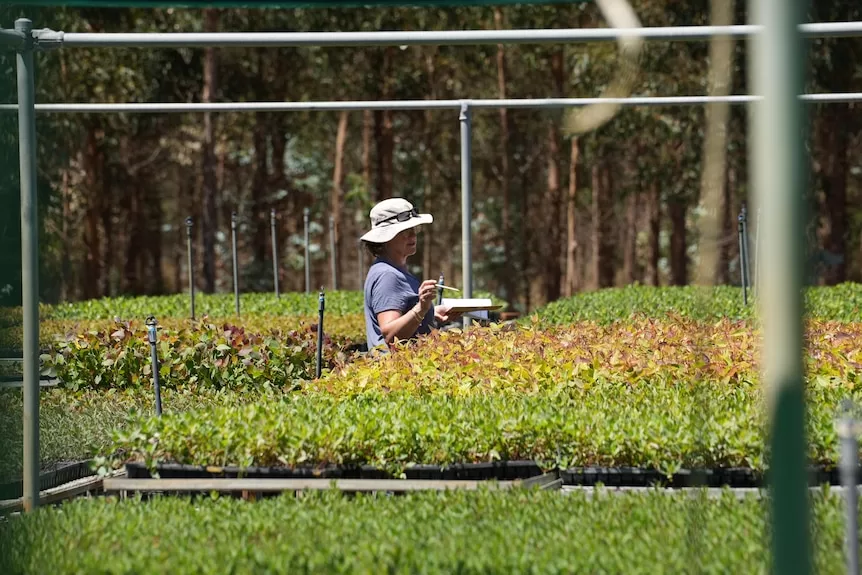- In short: Demand for pine in the construction industry could see Australia run out of homegrown timber in the next 10 years.
- The WA government has earmarked 33,000 hectares to grow 50 million trees, but it will take time for new trees to grow.
- What’s next: Academics are working with WA’s timber industry to see if native blue gums can be used in engineered timber instead.
Australia’s dwindling timber reserves could be exhausted in less than a decade, but industry experts are hoping a new native nursery in Western Australia could help ease the pressure.
In the coastal city of Albany, 450 kilometres south of Perth, Form Forests and Environment director Darryl Outhwaite grows native Australian plants for carbon capture and revegetation projects right across the state.
The bulk of his trees, however, are destined for blue gum plantations that dot the south-west landscape and feed paper pulp mills.
Following the Cook government’s native logging ban, the Albany tree farmer is expanding the nursery from two to three million seedlings a year to keep up with demand, and purchased a mechanised planting machine — the first of its kind in Australia.
Trees feed construction industry
Mr Outhwaite said the planter had already been earmarked to plant trees in plantations that produce timber for WA’s housing construction industry.
“The planting machine will be doing 50 per cent of its work in the softwood pine estate this winter,” he said.
“The government put $350 million into expanding its state pine estate and the planting machine will be a very important tool in getting that project done.”
Increasing the domestic supply of construction timber has been in the works since 2021, with the state government earmarking 33,000 hectares to grow 50 million trees.
But with construction outpacing the rate at which trees can be grown, experts are now looking at new ways to bolster domestic supply.
The University of Tasmania’s Centre for Sustainable Architecture with Wood deputy director Louise Wallis said WA’s plethora of blue gums could hold the key.
“We’re looking at what sawn-board products we get out of plantation blue gums,” she said.
“We have a lot of them in Australia, but currently something like 80 per cent of them, or more than 80 per cent, are destined for pulp.”
Dr Wallis said the shortage of domestic timber and the growing reliance on imported wood was the catalyst for researchers to see if the pulp tree could be used in construction.
“A lot of processes are looking at the opportunities for engineered timber products,” she said.
“Because there isn’t the supply available in native forestry sources we’ve had to look at how you can generate other products such as engineered flooring, cross-laminated timber, or glue-laminated timber.”
Innovation needed
The project is being conducted alongside West Australian softwood timber mill Wespine, with resource manager Brad Barr saying the mill needed to innovate to maintain local supply.
“The bigger issue that we’re trying to address is the shortage of timber that’s looming in the 2030s,” he said.
“We don’t have enough to build houses at the current rate using our own sources.
“It’s going to have to come from innovation using resources like the blue gum that we hadn’t considered in the past, or through imports from overseas.”
Dr Wallis said there was also national interest to embrace more carbon-neutral and sustainable timber building by the wider construction industry.
“The client particularly wants a building which is storing carbon and not creating as many emissions as possible,” she said.
“Most capital cities have now got at least two or three outstanding timber-rich, timber-design, office buildings, accommodation, or university buildings.”
Key stories of the day for Australian primary producers, delivered each weekday afternoon.
